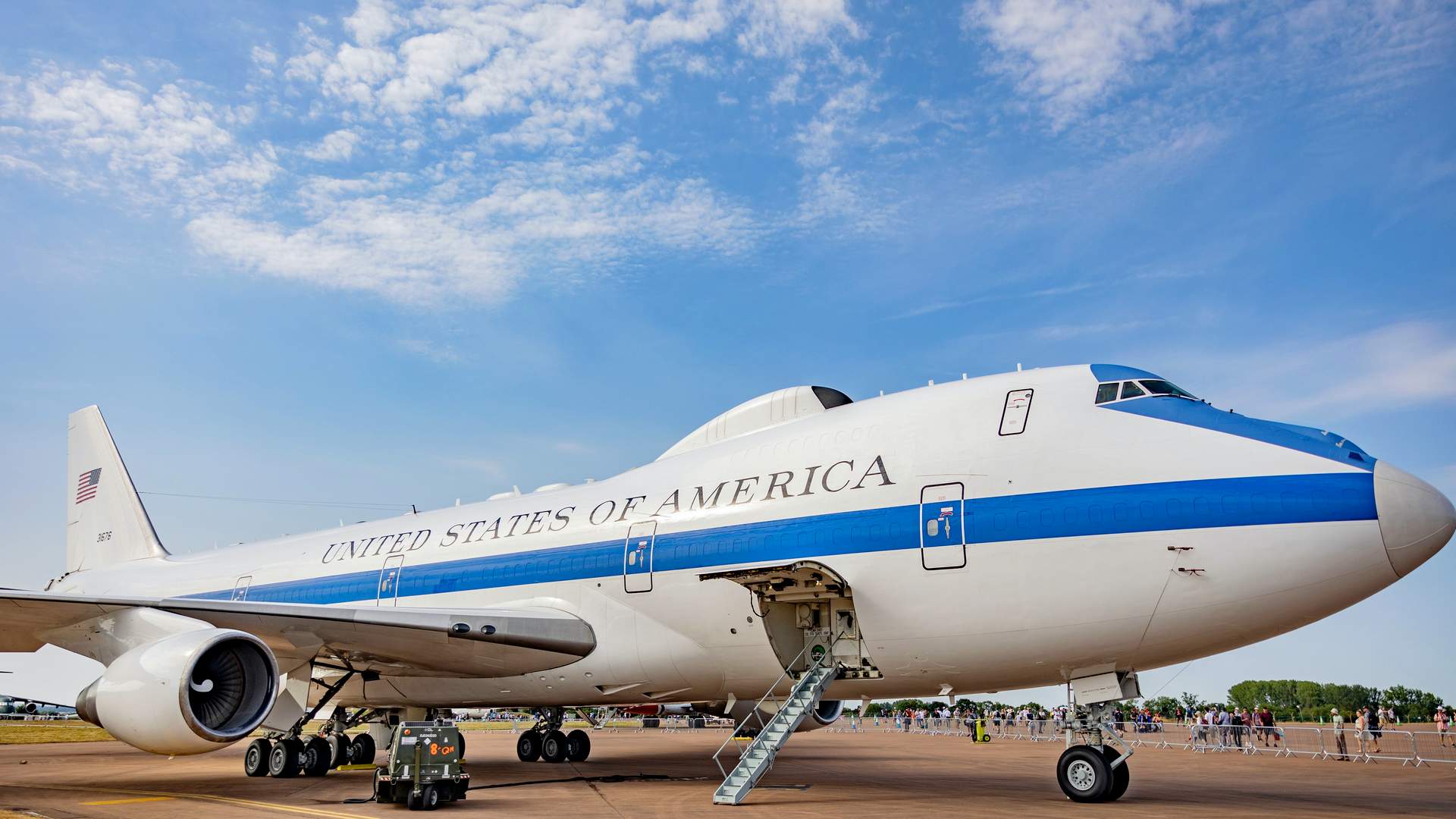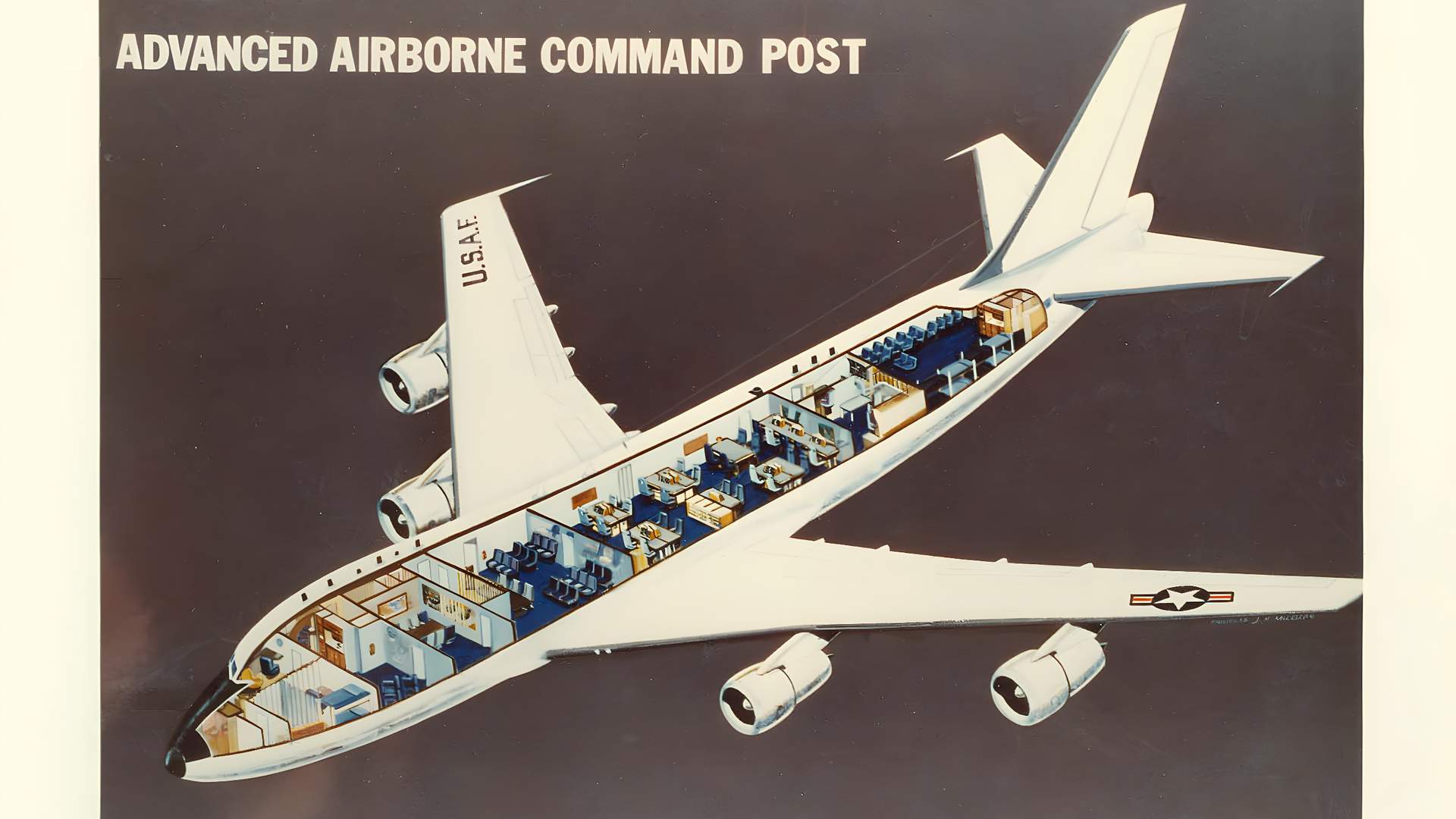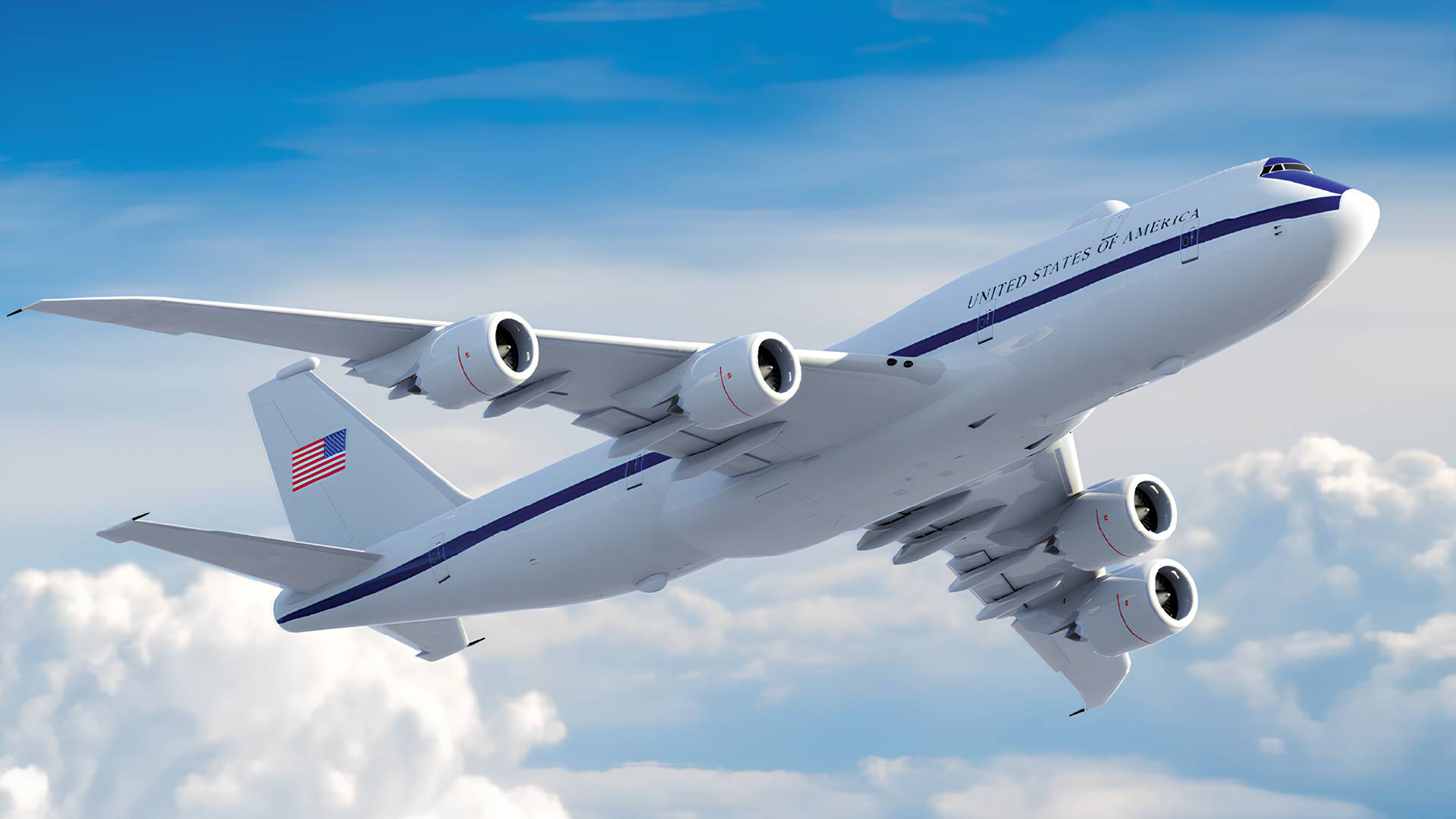The aircraft that will replace the USAF’s E-4B “doomsday” fleet, will be provided by Sierra Nevada Corp, after Boeing’s recent elimination.
Most people are familiar with the U.S. Air Force’s VC-25A fleet, which has the callsign “Air Force One” when the President is onboard. But aside from these two 747-based aircraft, the Air Force also has four others, with the designation E-4B “Nightwatch”.

Like the Presidential jets, Boeing built these aircraft as 747-200 derivatives, with substantial alterations and modifications both initially and over the years, including newer engines. The E-4B’s role is to be an airborne command post during national emergencies.
Each of these jets is built to withstand the electromagnetic effects of a nuclear blast, which is part of how they earned the “doomsday plane” moniker. And until last December, we knew that Boeing and Sierra Nevada Corp were competing for the plane’s replacement.

These jets are even older than the two Presidential VC-25As. The name of the replacement aircraft is the Survivable Airborne Operations Center or SAOC. After Boeing’s elimination in December, Sierra Nevada Corp was the only company that was publicly known to bid for the contract.
Sierra Nevada Corp, Boeing, and Fixed Price Contracts
We still don’t know if other companies were in the running, and if so, how many. Either way, on the 26th of April, the Air Force announced that Sierra Nevada Corp (SNC) will build the next aircraft. The Air Force expects the company to complete deliveries by July 2036.

The aircraft type that the company will use, based on its graphics, will almost certainly be the 747-8. Presumably, SNC has already identified specific, existing 747 airframes that it can procure for conversion into their new role.
The contract the company got is worth $13.1 billion. It is a fixed-price contract, and this appears to be the reason why the U.S. Air Force eliminated Boeing from this competition.

As we have seen, Boeing has taken substantial financial charges due to fixed-price contracts that went over budget. The next Presidential aircraft (VC-25B, above) is one such example. Boeing has been adamant about NOT agreeing to such a contract for the “doomsday” replacement project.
Sierra Nevada Corp may be a smaller company, but it is a long-established military contractor. The company is over 60 years old and has been working on multiple defense and NASA contracts over the years.
Click below for a recent MentourNOW video on this aircraft and why Boeing didn’t win this contract




1 comment
Shawn Erz
It was suggested that Boeing had probably already identified the “gently used” 747’s and had put “option-to-buy” contracts on them. This would drive up the acquisition costs for Sierra Nevada. This way, Boeing would win, even though they lost the contract. I wonder if, in fact, Boeing had done this?